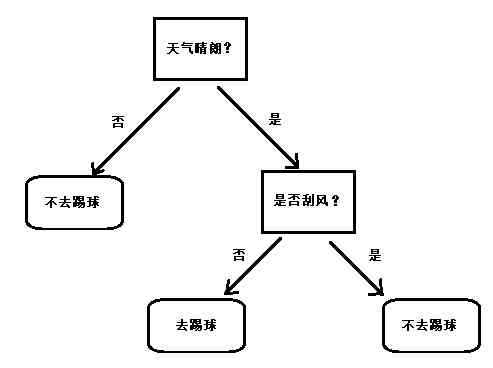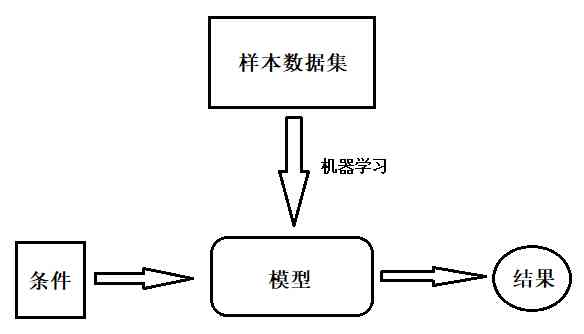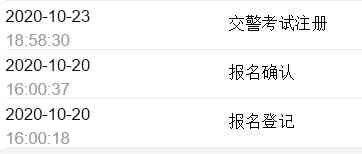WeChat official account : Manon charging station pro
Personal home page :https://codeshellme.github.io
1, What is a decision tree ?
Decision tree is a machine learning algorithm , We can use decision trees to deal with classification problems . Decision tree decision making ( classification ) The process can be expressed in an inverted tree structure , So it's called decision tree .
For example, we depend on the weather Whether it's sunny or not and Is it windy To decide whether to play football or not ? When it's sunny and windless , We just went to play football .
here , The decision process can be represented in a tree structure , as follows :

This is the simplest decision tree , We can use it to judge whether we want to play football . At the top is the root node of the tree , At the bottom is the leaf node of the tree . In the box is the process of judgment , In the oval is the result of the decision .
Of course , In actual use , The judgment condition is not so simple , And we won't let us draw our own pictures by hand . Practical application , We'll make the program automatic , This decision tree is constructed from a set of sample data , This program automatically builds the decision tree process is machine learning The process of .
The final decision tree is the result of machine learning , be called Model . Last , We can put some... Into the model Property conditions , Let the model give us Judge the result .

2, How to build a decision tree ?
For example, we have the following data sets :
| Serial number | Conditions : It's sunny ? | Conditions : Is it windy ? | result : To play football ? |
|---|---|---|---|
| 1 | yes | no | Go to |
| 2 | yes | yes | Don't go to |
| 3 | no | yes | Don't go to |
| 4 | no | no | Don't go to |
You can see in this table that 4 That's ok ( The first row header doesn't count ),4 Column data .
Generally in machine learning , The last column is called The goal is (target), The first column is called features (features).
We're going to use this data set , To build a decision tree , So how to build ?
First , You need to determine which attribute to use as the first criterion , It's to judge first It's sunny , Or judge first Is it windy ? That is to say , Let the weather be the root node of the tree , Or let the wind be the root node of the tree ?
To solve this problem, we need to use Information entropy and Information purity The concept of , Let's first look at what information entropy is .
3, What is information entropy ?
1948 year , Claude · Xiangnong is in his paper “ The mathematical principle of communication ” Mentioned in the Information entropy ( It's usually used H Express ), The unit for measuring information entropy is The bit .
That is to say , The amount of information can be quantified . The amount of information in a piece is related to the uncertainty of information , It can be said that , The amount of information is equal to the amount of uncertainty ( The uncertainty of information ).
The formula of information entropy is as follows :

The meaning of the formula is :
- Things to be classified can be divided into several categories , there
nIt's the number of categories . H(X)It's entropy , The mathematical meaning is , All categories contain information expectations .-㏒p(Xì)Represents the information value of the symbol ,p(Xì)Is the probability of choosing the classification .- Formula
logGeneral with 2 Bottom .
All in all , Just to know , The amount of information can be calculated by mathematical formula , In terms of information theory, it's called information entropy . The greater the entropy of information , The more information there is .
3.1, Calculate entropy of information
So let's calculate the information entropy of the above table data . We only focus on “ result ” That column :
| result : To play football ? |
|---|
| Go to |
| Don't go to |
| Don't go to |
| Don't go to |
According to the form , We can know , All categories share 2 Kind of , That is to say “ Go to ” and “ Don't go to ”,“ Go to ” There is 1 Time ,“ Don't go to ” There is 3 Time .
Separate calculation “ Go to ” and “ Don't go to ” Probability of occurrence :
P( Go to ) = 1 / 4 = 0.25P( Don't go to ) = 3 / 4 = 0.75
then , Calculate according to the formula of entropy “ Go to ” and “ Don't go to ” The entropy of information , among log With 2 Bottom :
H( Go to ) = 0.25 * log 0.25 = -0.5H( Don't go to ) = 0.74 * log 0.75 = -0.31127812445913283
therefore , The amount of information contained in the whole table is :
H( form ) = -(H( Go to ) + H( Don't go to )) = 0.81127812445913283
3.2, Using code to realize the calculation of information entropy
The process of calculating information entropy is used Python Code implementation , as follows :
import math
# This function is used to calculate the information entropy of a set of data
# data_set It's a list , Represents a set of data
# data_set The elements of data It's also a list
def calc_ent(data_set):
labels = {} # Used to count each label The number of
for data in data_set:
label = data[-1] # Only the last element is used for calculation
if label not in labels:
labels[label] = 0
labels[label] += 1
ent = 0 # entropy
n = len(data_set) # Number of data
# Calculate entropy of information
for label in labels:
prob = float(labels[label]) / n # label Probability
ent -= prob * math.log(prob, 2) # According to the formula of information entropy
return ent
This function is used to calculate the information entropy of the table :
# Convert the table to python list
# "yes" Express " Go to "
# "no" Express " Don't go to "
data_set = [['yes'], ['no'], ['no'], ['no']]
ent = calc_ent(data_set)
print(ent) # 0.811278124459
so , The result of code calculation is 0.811278124459, With the result of our manual calculation 0.81127812445913283 It's the same ( The number of decimal places reserved is different ).
4, What is information purity ?
The purity of information is inversely proportional to information entropy :
- The greater the entropy of information , The more information , The more messy the information is , The lower the purity .
- The less entropy of information , The less information , The more regular the information is , The higher the purity .
classical “ Impure ” There are three algorithms , Namely :
- Information gain , namely
ID3 Algorithm,Information Divergence, The algorithm consists ofRoss QuinlanOn 1975 in , Can be used to generate a binary tree or a multi tree .- ID3 The algorithm will select the attribute with the largest information gain as the partition of attributes .
- Information gain rate , namely
C4.5 Algorithm, yesRoss Quinlanstay ID3 Based on the improved algorithm , Can be used to generate a binary tree or a multi tree . - Gini is not pure , namely
CART Algorithm,Classification and Regression Trees, Chinese is Categorizing regression trees .- It can be used for classification number , It can also be used for regression trees . Classification trees use The gini coefficient Do judgment , Return to the tree with deviation Do judgment .
- The Gini coefficient itself reflects the uncertainty of the sample .
- When the Gini coefficient is smaller , The smaller the difference between the samples , The less uncertainty .
CART AlgorithmThe attribute with the smallest Gini coefficient will be selected as the attribute partition .
Information gain is one of the simplest algorithms , The latter two are derived from it . In this article , We're just going to go into details about information gain .
The gini coefficient It is a common indicator used to measure the income gap of a country in economics . When the Gini coefficient is greater than
0.4When , It shows that there are great differences in wealth . The Gini coefficient is in0.2-0.4The distribution is reasonable , The wealth gap is not big .
5, What is information gain ?
Information gain is , Before and after partitioning a dataset according to a property , Changes in the amount of information .
The formula of information gain is as follows :

The meaning of the formula :
- In short :
G = H( Parent node ) - H( All child nodes ) - That is to say : The information entropy of the parent node subtracts the information entropy of all the child nodes .
- The information entropy of all the child nodes will be calculated according to the probability of the child node appearing in the parent node , It's called Normalized information entropy .
The purpose of information gain is , The purity improvement after partitioning the data set , That is, the decrease of information entropy . If the data set is divided according to a certain attribute , Can obtain the maximum information gain , So this property is the best choice .
therefore , We want to find the root node , We need to calculate the information gain of each attribute as the root node , Then get the attribute with the most information gain , It's the root node .
5.1, Calculated information gain
For the sake of convenience , I put the form above here :
| Serial number | Conditions : It's sunny ? | Conditions : Is it windy ? | result : To play football ? |
|---|---|---|---|
| 1 | yes | no | Go to |
| 2 | yes | yes | Don't go to |
| 3 | no | yes | Don't go to |
| 4 | no | no | Don't go to |
We already know that , Information gain is equal to the difference of information entropy before and after dividing according to a certain attribute .
We already know the entropy of information before this table is partitioned , That's what we calculated above :
H( form ) = 0.81127812445913283.
Next , We calculate according to “ It's sunny ” Divided information gain . according to “ It's sunny ” After dividing, there are two tables .
form 1,“ It's sunny ” The value of is “ yes ”:
| Serial number | Conditions : It's sunny ? | Conditions : Is it windy ? | result : To play football ? |
|---|---|---|---|
| 1 | yes | no | Go to |
| 2 | yes | yes | Don't go to |
Classification has something in common 2 Kind of , That is to say “ Go to ” and “ Don't go to ”,“ Go to ” There is 1 Time ,“ Don't go to ” There is 1 Time .
therefore ,“ Go to ” and “ Don't go to ” The probability of occurrence is 0.5:
P( Go to ) = P( Don't go to ) = 1 / 2 = 0.5
then ,“ Go to ” and “ Don't go to ” The entropy of information , among log With 2 Bottom :
H( Go to ) = H( Don't go to ) = 0.5 * log 0.5 = -0.5
therefore , form 1 The amount of information contained is :
H( form 1) = -(H( Go to ) + H( Don't go to )) = 1
form 2,“ It's sunny ” The value of is “ no ”:
| Serial number | Conditions : It's sunny ? | Conditions : Is it windy ? | result : To play football ? |
|---|---|---|---|
| 3 | no | yes | Don't go to |
| 4 | no | no | Don't go to |
All the classifications are only 1 Kind of , yes “ Don't go to ”. therefore :
P( Don't go to ) = 1
then ,“ Don't go to ” The entropy of information , among log With 2 Bottom :
H( Don't go to ) = 1 * log 1 = 0
therefore , form 2 The amount of information contained is :
H( form 2) = 0
The total data share 4 Share :
- form 1 There is 2 Share , The probability of 2/4 = 0.5
- form 2 There is 2 Share , The probability of 2/4 = 0.5
therefore , Finally according to “ It's sunny ” The information gain of the partition is :
G( It's sunny ) = H( form ) - (0.5*H( form 1) + 0.5*H( form 2)) = H( form ) - 0.5 = 0.31127812445913283.
5.2,ID3 Disadvantages of the algorithm
When we calculate more information gain , You'll find that ,ID3 The algorithm tends to select the attribute with more values as ( root ) node .
But sometimes , Some properties don't affect the result ( Or it has little effect on the results ), Then use ID3 The selected attributes are not appropriate .
To improve ID3 This shortcoming of the algorithm ,C4.5 The algorithm came into being .
C4.5 Algorithm to ID3 The improvements of the algorithm include :
- Using information gain rate , It's not information gain , avoid ID3 The algorithm tends to choose the attribute with more values .
- Added pruning technology , prevent ID3 The occurrence of over fitting in the algorithm .
- Discretization of continuous attributes , bring C4.5 The algorithm can handle the case of continuous attributes , and ID3 Can only handle discrete data .
- Handling missing values ,C4.5 It can also deal with incomplete data sets .
Of course C4.5 The algorithm is not without shortcomings , because C4.5 The algorithm needs to scan the data set many times , So the efficiency of the algorithm is relatively low . There's no more discussion here C4.5 Algorithm .
The next part will introduce how to use decision tree to solve practical problems .
Welcome to follow the author's official account , Get more technical dry goods .





